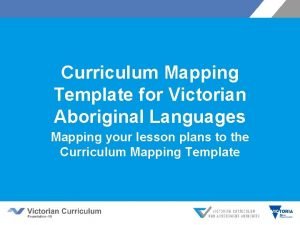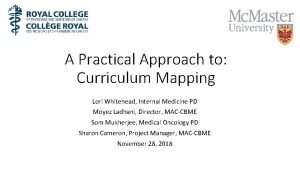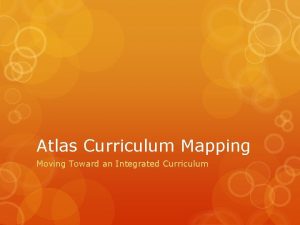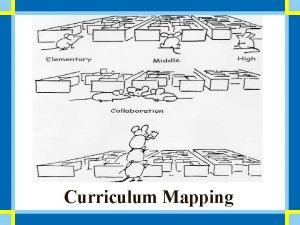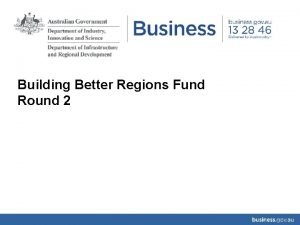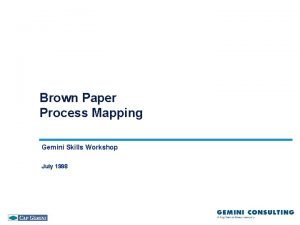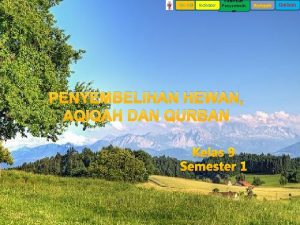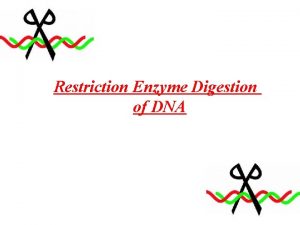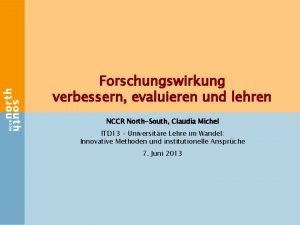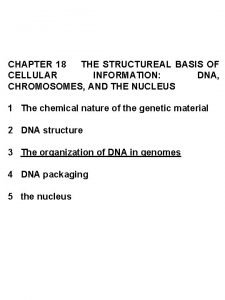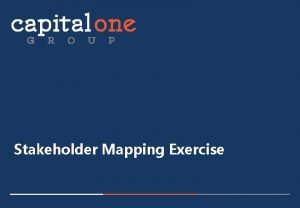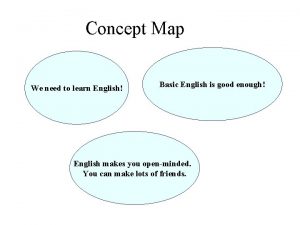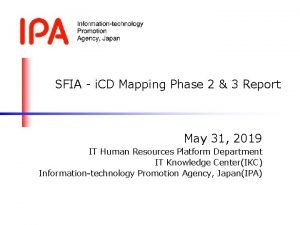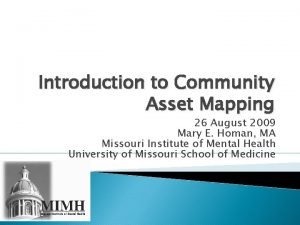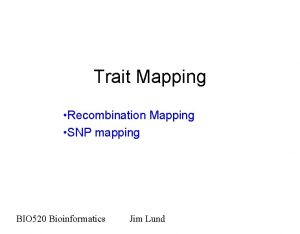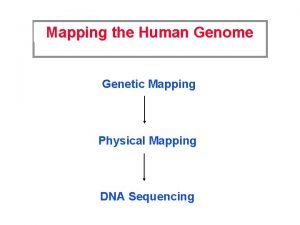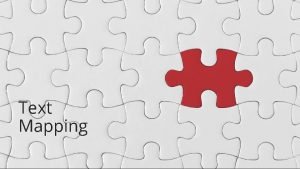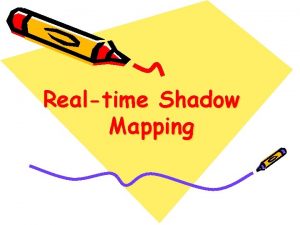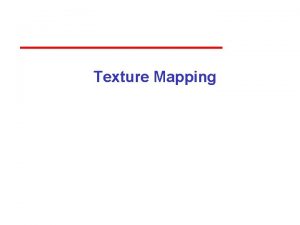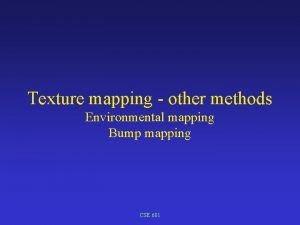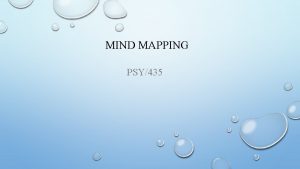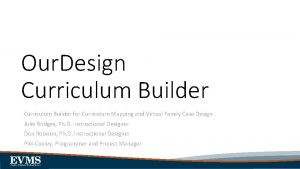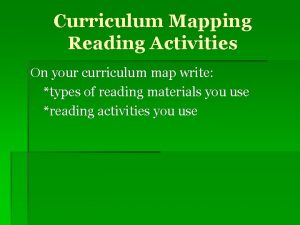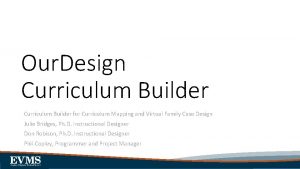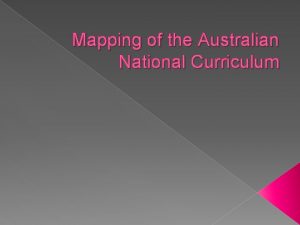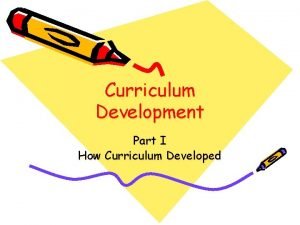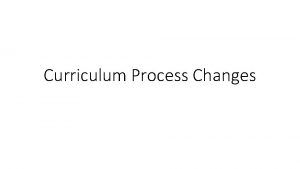CURRICULUM MAPPING What is Mapping Curriculum Mapping is






















- Slides: 22

CURRICULUM MAPPING

What is Mapping? • Curriculum Mapping is the documentation and discussion of what we teach. • It is a collaborative process that helps us understand teaching and learning throughout the school.

What is Mapping? - a technique for exploring elements of curriculum: § What is taught the primary § How instruction occurs n When instruction is delivered.

Why Curriculum Mapping? § It benefits ALL students. § Mapping is a COMMUNICATION tool. § Mapping is a PLANNING tool, it keeps us FOCUSED and targets necessary information. § Promotes PROFESSIONALISM and teaching creativeness.

Why Curriculum Mapping? § Mapping allows us to focus on fewer goals, and therefore, teach concepts in depth. § Mapping will eliminate wasted review and expand teaching time. § It vertically shows curriculum steps.

What information do we collect on the Map? • Content • Assessment • Skills/Thinking Processes

Design Elements • Choice of CONTENT: the essential concepts and topics covered. • Choice of THINKING PROCESSES: the precise technical and thinking skills. • Choice of ASSESSMENT: the product or performance to demonstrate learning.

Who are your Learners?

What is in the best interest of our specific clients? … the students in our setting: • Their age • Their stage of development • Their learning characteristics • Their communities • Their aspirations • Their needs

CURRICULUM MAP

CURRICULUM MAP

CURRICULUM MAP

PROCEDURES • PHASE 1: Data Collection • PHASE 2: First Read-through • PHASE 3: Small Mixed Group Review • PHASE 4: Large Group Comparisons • PHASE 5: Determine Immediate Revision Points • PHASE 6: Determine Points Requiring Some Research and Planning • PHASE 7: Plan for Next Review Cycle

PHASE 1: Data Collection • Collecting Content Data • Collecting Skill and Assessment

PHASE 2: First Read-Through • A review of all maps by all teachers. • Each teacher reads the entire school map as an editor and carries out the “tasks”.

PHASE 3: Mixed Small Group • Small mixed group reviews, in which groups of five to eight diverse faculty members share individual findings • The goal is to simply share individual findings.

PHASE 4: Large Group Review • Large group comparisons, in which all faculty members gather to examine the findings of the smaller groups. • Session is facilitated by principal and/or teacher leader.

PHASE 5: Determine areas for immediate revision • Identification of immediate revision points and creation of a timetable for resolution.

PHASE 6: Determining those areas requiring long term planning • Identification of points requiring additional research and planning, and a timetable for resolution of those points.

PHASE 7: The Cycle Continues • Planning for the next review cycle. • The district cabinet meets 3 times annually for review. • The site based council continues its review of the maps through the course of the year and into the next.

Maps are never finished; they are a work in progress! Documentation Revision Examination Documentation Revision

Prepared by: Ms. Anna Lou G. Ybañez
 Prinsip analisis dan desain
Prinsip analisis dan desain The associative mapping is costlier than direct mapping.
The associative mapping is costlier than direct mapping. Forward mapping vs backward mapping
Forward mapping vs backward mapping Vcaa curriculum mapping
Vcaa curriculum mapping Lori whitehead
Lori whitehead Curriculum mapping
Curriculum mapping Atlas curriculum mapping
Atlas curriculum mapping Curriculum mapping definition
Curriculum mapping definition Er to relational mapping algorithm
Er to relational mapping algorithm Bbrf mapping tool
Bbrf mapping tool Brown paper mapping
Brown paper mapping Ketentuan menyembelih hewan qurban
Ketentuan menyembelih hewan qurban Restriction enzyme mapping
Restriction enzyme mapping Intervention mapping matrix
Intervention mapping matrix Rapid outcome mapping approach
Rapid outcome mapping approach Restriction mapping
Restriction mapping Stakeholder mapping exercise
Stakeholder mapping exercise Chapter 10 meiosis 1 and meiosis 2
Chapter 10 meiosis 1 and meiosis 2 Concept mapping in english grammar
Concept mapping in english grammar Process mapping meaning
Process mapping meaning Sfia mapping
Sfia mapping An introduction to community asset mapping
An introduction to community asset mapping Concept mapping tutorial
Concept mapping tutorial



